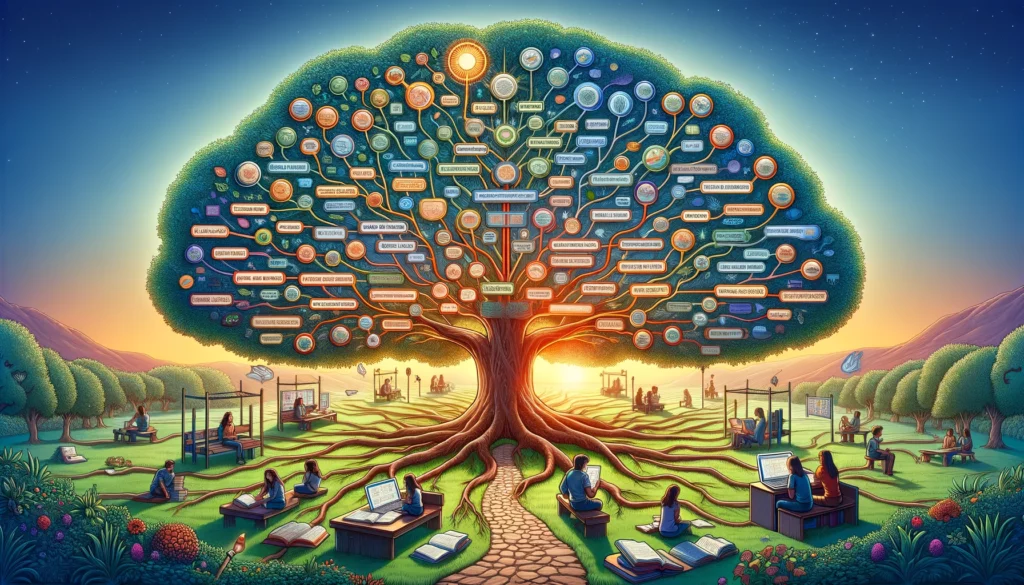In the garden of learning, where knowledge blooms in endless variety, mind maps stand as the trellises that support the growth of understanding. They are not just tools but collaborators in the quest for academic success, guiding thoughts and ideas to intertwine and flourish. This article delves into how mind maps can transform the landscape of your study habits, turning the wild underbrush of information into organized, blooming paths of knowledge.
Contents
Unearthing the Roots: What Are Mind Maps?
At their core, mind maps are the skeletons of thoughts, giving structure to the flesh of ideas. Imagine a central concept as the trunk of a tree, with branches spreading out into subtopics, each leaf a detail or fact related to the main idea. This visualization technique mirrors the way our brains naturally organize information, making it an effective study method that can enhance memory, creativity, and understanding.
Cultivating Your Garden: How to Create Effective Mind Maps
Creating a mind map is akin to planting your own garden of knowledge. You start with the seed of an idea, planting it in the fertile soil of a blank page. As you water it with your thoughts, it begins to sprout branches—key concepts that stem from the main idea. Here are some study tips to help your mind map garden thrive:
- Start with a Central Idea: Place the main topic at the center of your page. This is the sun that everything else will orbit around.
- Use Branches for Major Themes: Draw branches to represent the main themes or ideas related to your central concept. These are the main pathways of your garden.
- Add Leaves for Details: Each branch can sprout leaves—specific facts, figures, or thoughts that support the main themes.
- Incorporate Colors and Images: Just as flowers add beauty and distinction to a garden, colors and images can make your mind map more memorable and engaging.
Nurturing Growth: The Benefits of Mind Maps in Study
Mind maps do more than just organize information; they cultivate a deeper understanding and retention of knowledge. Here’s how:
- Enhanced Memory Retention: By organizing information visually, mind maps tap into our brain’s natural preference for images, making it easier to recall details.
- Increased Creativity: Like cross-pollinating plants leading to new varieties, the process of creating mind maps can spark connections between ideas that you might not have seen before.
- Efficient Exam Preparation: Mind maps distill complex information into manageable, bite-sized pieces, making them excellent tools for exam success strategies and revision techniques.
Pruning and Grafting: Tips for Using Mind Maps Effectively
To get the most out of mind mapping, consider these additional strategies:
- Review and Update Regularly: Like a garden, your mind map needs tending. Regular review and updates will help reinforce the material and allow you to add new information.
- Use Digital Tools: Several apps and software programs are designed for mind mapping, offering the flexibility to adjust and expand your maps as needed.
- Practice Collaboration: Mind maps can be used for group study sessions, allowing each student to contribute ideas and insights, enriching the learning experience for all.
Conclusion: A Lush Landscape of Learning
The power of mind maps in enhancing study efficiency is undeniable. They transform the chaotic jungle of information into organized, navigable paths, guiding learners to academic success. By embracing this tool, students can unlock new levels of understanding and retention, making the journey through the educational landscape not only more manageable but also more enjoyable. As you venture forth, let mind maps be your guide, turning the quest for knowledge into a journey of discovery.






